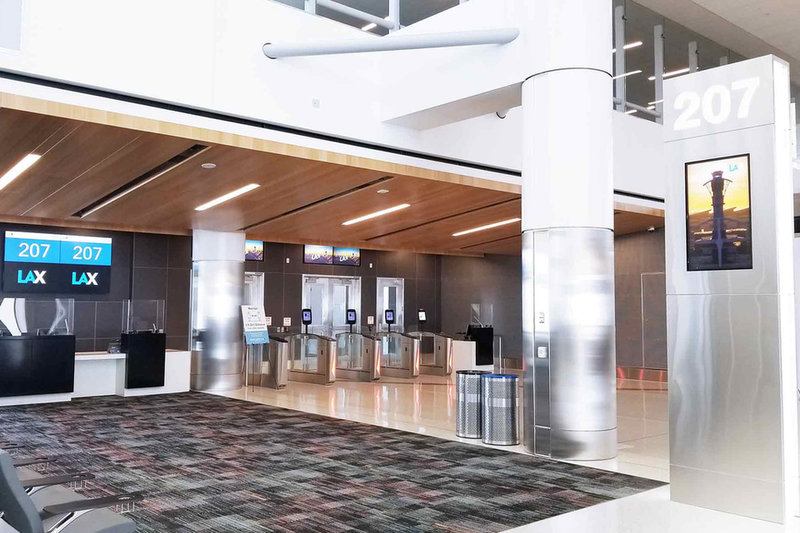Technology
Can’t touch this: contactless solutions for airports
The future of airport travel is morphing into a contactless, biometric-centric experience, where passengers can board aircraft with only their faces. Frankie Youd speaks to technology company IDEMIA to find out more.
Image: copyright
Biometric solutions have played a key role when it comes to opening the aviation industry in the wake of Covid-19. Providing a contactless, secure, and efficient means of validating passenger identity, swift boarding, and security control – these solutions have allowed the industry to take to the skies once more.
Multinational technology company IDEMIA provides identity-related security services as well as facial recognition and biometric solutions to a range of industries. The company has recently announced a partnership with Oakland International Airport, where facial recognition technology that utilises biometrics has been deployed.
Alongside this, IDEMIA is also piloting a self-boarding e-gate at New Jersey’s Newark Liberty Airport to provide a contactless, rapid boarding process for passengers
We speak to Lisa Sullivan, senior vice president of travel and transport at IDEMIA North America, to find out more about the current technology, as well as what the company thinks the future holds for the industry.

Lisa Sullivan, senior vice president of travel and transport at IDEMIA North America
Frankie Youd: Could you provide some background on the company and the solutions available for aviation?
Lisa Sullivan: IDEMIA is a global leader in security and identity. In the US, we are a top provider of driver’s licenses and a partner to government agencies at both federal and state levels, including TSA as the provider of TSA PreCheck and their other trusted programs.
We provide our agency partners with secure, convenient, and reliable identification solutions to streamline and expand their operations, while also developing stronger relationships with citizens.
As a company, we take a security-first approach to identity. IDEMIA’s technology does not store private passenger information, ensuring that data for airport solutions is kept only in the government system of record, where it has always been located.
Our solutions are also independently verified for accuracy, consistency, and bias. When compared to other industry providers, IDEMIA has held the number one spot in The National Institute of Standards and Technology Facial Recognition Vendor Test, reaffirming our commitment to equipping agencies and users with trustworthy and continuously improving solutions.

Could you explain the technology used at Oakland International Airport?
In October, IDEMIA announced a partnership with Oakland International Airport to deploy MFACE, our contactless facial biometric technology, for departing international travellers out of Terminal 1.
MFACE technology identifies a continuous flow of people walking through a designated area. The technology, which requires no touch and limited interaction with the system, can recognise passenger faces within less than a second without comprising security.
We are excited to see MFACE deployed at Oakland, as it will streamline the airport’s screening process, expediting passenger clearance and therefore allow operations to maximise resources, while also adhering to social distancing guidelines and providing a secure identification process.
Worth noting is that the MFACE system is designed to enable flexibility and adaptability. It can be deployed as a standalone unit, desktop unit, or ready-to-integrate OEM kit, providing Oakland’s TSA agents with a seamless transition from gate-to-gate – this is one of the biggest reasons Oakland selected IDEMIA as its partner for this effort.
IDEMIA is currently piloting technology at New Jersey’s Newark Liberty Airport, could you explain this technology?
In August, IDEMIA announced a partnership with Newark Liberty International Airport and self-service equipment provider EASIER to launch a biometric self-boarding e-gate, to make the boarding process more secure and seamless.
When a passenger approaches the e-gate, they remove their mask for a biometric scan of their face and confirm their approval to board the plane. Typically, the boarding process would require passengers to wait in line for an attendant to scan their boarding passes and passports but with our biometric boarding approach, we introduce a touchless and frictionless process that offers enhanced and contactless convenience.
The e-gate is also highly secure, working with U.S. Customs and Border Protection to quickly cross-reference images between the passenger’s government record and their face. This e-gate will help Newark Liberty Airport serve more travellers, faster, reducing wait times and improving customer experience.
It will also limit physical contact between attendants, travellers, and shared surfaces: a crucial provision during the Covid-19 pandemic and as airports aim to bolster their health and safety processes.
Would you say that biometric solutions are key for the industry’s recovery and future?
Biometric technologies are absolutely a key solution for the airport industry to recover. With airports now following more stringent health and safety guidelines, and many travellers concerned about social distancing and Covid-19 exposure, biometrics provide the contactless capabilities, enhanced security, and expedited screening processes that airports need to better serve passengers.
This also goes a long way to helping travellers feel comfortable and protected – from both a health and identification standpoint.

Do you think that this technology will be the future of passenger travel?
As the world shifts toward a digital transformation, biometric technologies are helping airports, agencies such as TSA, and passengers meet the need for paperless, contactless, and frictionless solutions.
Biometrics also enhance the passenger experience to make travelling less stressful. With biometrics, travellers can be identified in seconds to move quickly through screening, enabling them to show up to the airport later and skip long lines.
Biometrics also allow passengers to better protect their identification and boarding documents, and to avoid the hassle of locating, presenting, and potentially losing these items.
Biometric technologies that partner with government agencies for authentication, such as IDEMIA, help instil greater confidence in these agencies that they are prioritising the protection of consumers’ identities and ensuring that they utilise the most updated, accurate, and secure systems.
Are there any other projects or technology that the company is currently working on?
We have a few really exciting opportunities in the coming months. IDEMIA is launching a new solution in December that will leverage the privacy principles for all other touchpoints at the airport, such as bag drop or lounges.
Also, while TSA doesn’t currently use biometric checkpoints, TSA does validate identity and travel credentials through IDEMIA's Credential Authentication Technology, and earlier this year noted that they are working to accept a digital ID at the checkpoint.
By accepting a digital ID, TSA is will usher in a future that not only provides an enormous amount of convenience for travellers but also reinforces their core objective of maintaining privacy and creating a secure environment.
All images credit: IDEMIA